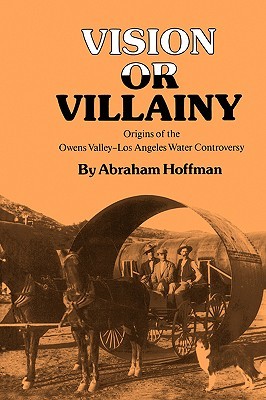
- We will send in 10–14 business days.
- Author: Abraham Hoffman
- Publisher: Texas A&M University Press
- ISBN-10: 0890965099
- ISBN-13: 9780890965092
- Format: 15.3 x 23 x 2.3 cm, minkšti viršeliai
- Language: English
- SAVE -10% with code: EXTRA
Reviews
Description
Seventy-five years ago the growing city of Los Angeles, amid considerable conflict, appropriated water from a rural area 250 miles away. Still unresolved, the controversy surrounding the Owens Valley-Los Angeles Aqueduct has long since moved from the personal, even violent level fictionalized in the movie Chinatown to the dry realm of court proceedings, injunctions, and environmental impact reports. But water remains a problem in California, and the questions raised by these events--the rights of a rural area versus a growing metropolitan area, environmental issues, and levels of government responsibility--are of recognized national importance today.
Much of the history of the controversy has been incompletely or imperfectly reported. Conventional accounts have focused on city versus valley, overlooking the role of the federal government. Others espouse the conspiracy theory popularized in Chinatown, dealing in plots and personalities. Relying on primary sources, many unused until now, Dr. Hoffman demonstrates how the utilitarian views of Theodore Roosevelt and his agents in the Geological Survey, the Reclamation Service, and the Bureau of Forestry helped determine the future of Los Angeles and the fate of Owens Valley. A model of historical reporting, this book redresses the balance in a record that too often has been oversimplified, usually at the expense of the city and often in terms of heroes and villains.EXTRA 10 % discount with code: EXTRA
The promotion ends in 21d.10:27:23
The discount code is valid when purchasing from 10 €. Discounts do not stack.
- Author: Abraham Hoffman
- Publisher: Texas A&M University Press
- ISBN-10: 0890965099
- ISBN-13: 9780890965092
- Format: 15.3 x 23 x 2.3 cm, minkšti viršeliai
- Language: English English
Seventy-five years ago the growing city of Los Angeles, amid considerable conflict, appropriated water from a rural area 250 miles away. Still unresolved, the controversy surrounding the Owens Valley-Los Angeles Aqueduct has long since moved from the personal, even violent level fictionalized in the movie Chinatown to the dry realm of court proceedings, injunctions, and environmental impact reports. But water remains a problem in California, and the questions raised by these events--the rights of a rural area versus a growing metropolitan area, environmental issues, and levels of government responsibility--are of recognized national importance today.
Much of the history of the controversy has been incompletely or imperfectly reported. Conventional accounts have focused on city versus valley, overlooking the role of the federal government. Others espouse the conspiracy theory popularized in Chinatown, dealing in plots and personalities. Relying on primary sources, many unused until now, Dr. Hoffman demonstrates how the utilitarian views of Theodore Roosevelt and his agents in the Geological Survey, the Reclamation Service, and the Bureau of Forestry helped determine the future of Los Angeles and the fate of Owens Valley. A model of historical reporting, this book redresses the balance in a record that too often has been oversimplified, usually at the expense of the city and often in terms of heroes and villains.

Reviews